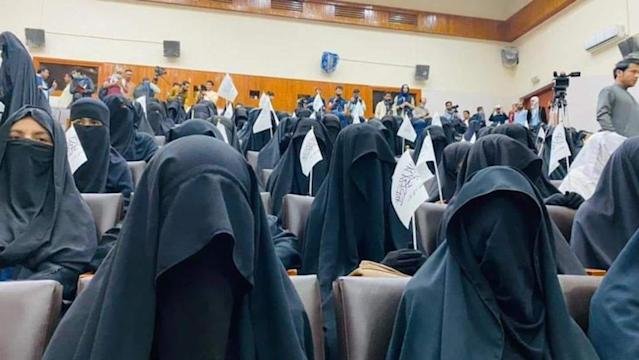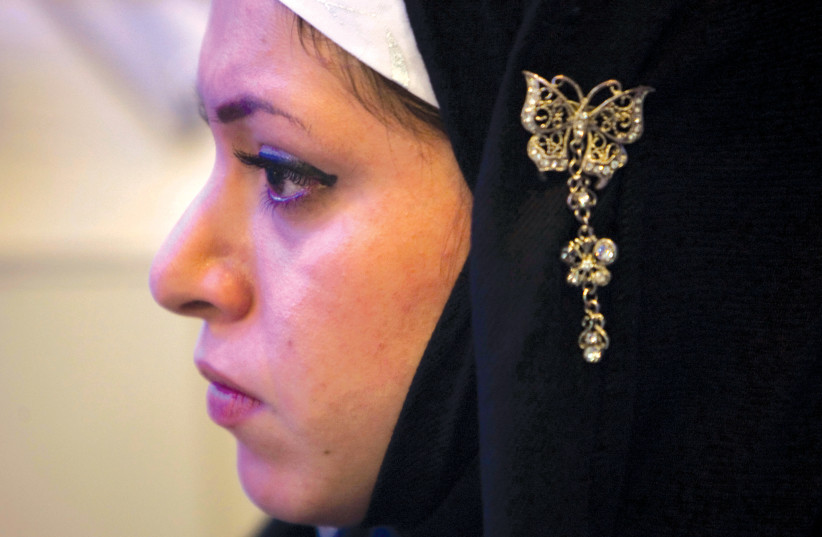Hijab, an insane Cancel Culture Against Women? Hey Feminists, can political correctness be allowed to cover up ACTUAL oppression of women?


“There is nothing feminist about censoring female voices who don’t have the choice to wear a hijab. There is also nothing Islamophobic about supporting a woman’s right to choose.”
In the midst of the recent hostage-taking in a synagogue in Colleyville, Texas, the media intentionally withheld information about the attacker, Malik Faisal Akram, in order to be politically correct. The result was a bizarre combination of headlines that seemed to intentionally minimize the antisemitic nature of the attack. In one instance, the AP selectively referenced the FBI’s statement and claimed that the attacker, which many news sources referred to only as a British man, was not focused on the Jewish community when he entered a synagogue armed during Shabbat services and took Jews hostage. Sadly, the phenomenon of political correctness in the press and popular culture isn’t unique to the issue of antisemitism.
Feminist leaders like Masih Alinejad, an Iranian-American journalist, have been facing immense pushback from both the press and western feminists over her campaign against the forced hijab and other forms of oppression against women in Iran. After sharing the story of her choice to not wear a hijab and warning of the outrageous consequences for women in Iran who choose not to cover their hair, she was censored repeatedly. As well, she was told her story and activism demanding equality for women would contribute to Islamophobia.
In response, Alinejad launched the #LetUsTalk campaign, which pushes back against the censorship of Middle Eastern women fighting for women’s equality. However, despite the fact that Alinejad showed up to the Women’s March five years ago in solidarity, none of the women there would join her in her fight for freedom of choice. “I found that hardly anyone was willing to support my campaign against compulsory hijab, lest they be accused of promoting Islamophobia,” she wrote in The Washington Post.
If feminists from the West like myself can’t even stand in solidarity against compulsory hijab for women facing physical beatings for making their own choices, then what on earth are we fighting for? Since the Islamic revolution in 1979, Iran has forced women to wear the hijab under the punishment of prison time and lashes. Additionally, women are forbidden from dancing, smoking, singing, riding bicycles, and a number of other activities are banned for women by absurd, discriminatory laws. Thousands of Iranian girls are married off between the ages of 10 and 14, according to the UN, and women need the permission of their husband or father for a number of activities including travel. These laws are enforced by the oppressive morality police, who patrol cities monitoring women’s behavior and dress to ensure it is modest enough. The situation for the women of Iran is a human rights crisis.

An Iranian woman wears jewelry on her hijab as she attends a ceremony to mark National Chastity and Hijab Day in Tehran. (photo credit: MORTEZA NIKOUBAZI/ REUTERS)
The failure to stand with Alinejad and the women of Iran against compulsory hijab is a betrayal of the values of feminism and to silence voices of women from these communities for fear of Islamophobia is a double betrayal.
As feminists, as western feminists, can political correctness be allowed to cover up the oppression of women when and where it occurs? There is nothing feminist about censoring female voices who don’t have the choice to wear a hijab. There is also nothing Islamophobic about supporting a woman’s right to choose. We must support our fellow women fighting oppression in making their stories and their voices heard. Let them talk!
DISCLAIMER: The author is solely responsible for the views expressed in this article. The author carries the responsibility for citing and/or licensing of images utilized within the text.
